Paper samurai
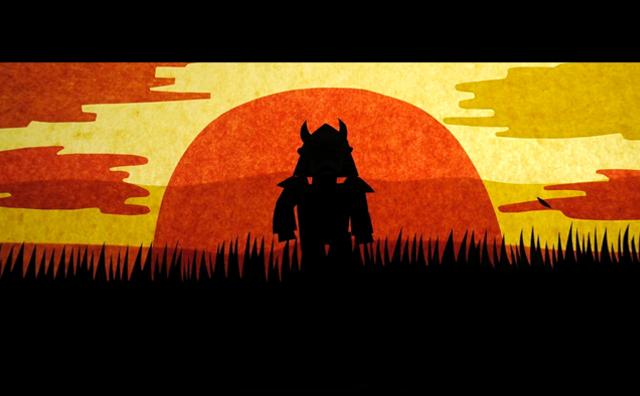
Eric Power is pretty prolific in his animations. His most recent is called Path of Blood and promises “more paper cuts than you can handle.” Hilarious. This animation is papercraft. Eric’s sense of humor comes out in the action of the delightful little film, and in the sound design. I even find myself chuckling at things that weren’t meant to be funny. Were they? The fish jumping in the river – the sound is way too small for the size of that thing.
Anyway there’s lots of blood and bones and even an eyeball or two, but it’s paper so you’ll be fine.

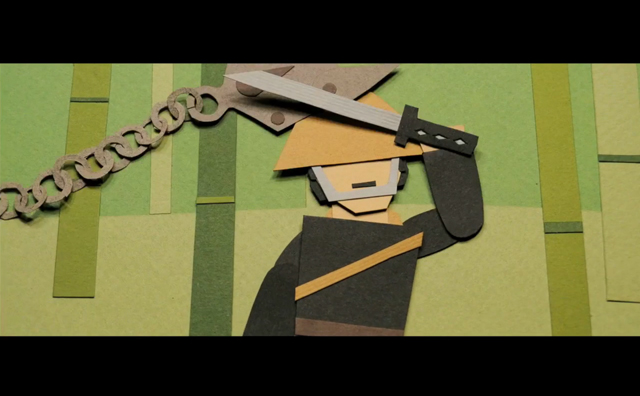
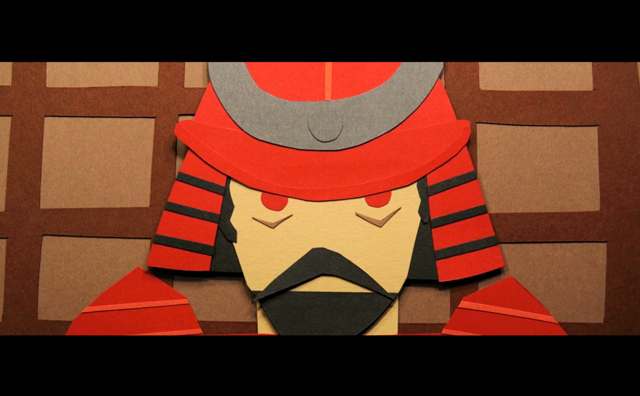
This so reminds me of Samurai Jack! Does anyone remember that show from Cartoon Network? I think it was around the late nineties or early 00’s that it stopped airing. Check out the title sequence in hd. So cinematic – so nuanced. These episodes used to keep me spellbound, perhaps that’s why I like Path of Blood so much. It’s the cinematic qualities paired with awesome sound design. Winning combo. Also – the blood spurt style – so very much like Kateshi Kitano’s Zatoichi the Blind Swordsman, released in ’03. Those blood spurts where blatantly CGI, but also produced a distinct hissing sound, much like the papercraft samurai spot.
Do I recall a few hissing sounds in Kill Bill? I can’t quite recall, I suppose if you really did chop someone’s head clean off with a sharp sword there would be such a rush of blood that it would hiss? I think it’s mean to amuse rather than be realistic. For me, it works.
Mi’kmaq legend
For the past few months I’ve really been enjoying a book by Ella Elizabeth Clark called Indian Legends of Canada. It was printed by McClelland and Stewart Limited in 1960, and reprinted in 1981, my birth year. I’m pretty sure new works wouldn’t include the word “Indian” in the title, they’d probably be more sensitive and use something like Native, Aboriginal, or First People’s.
Regardless, the book is full of legends and stories beyond the ubiquitous creator-culture-hero-trickster cycles that seem to be the stereotypical native legend told to white kids in elementary school. Growing up in the Pacific Northwest we had plenty of coyote/raven/salmon myths told to us all orbiting around a similar theme. Sadly, the full breadth of the cultures these stories represented was left out. This little book is available on Amazon, with the cover I like least.
What is relevant to us today is this awesome little story from the Mi’kmaq people whose territory stretched from what is now northern Maine to Nova Scotia, PEI, and New Brunswick. English transliterators called them Micmac, which is how they are referred to in the book. Yet another error. But I’ll stop bitching and begin the tale!
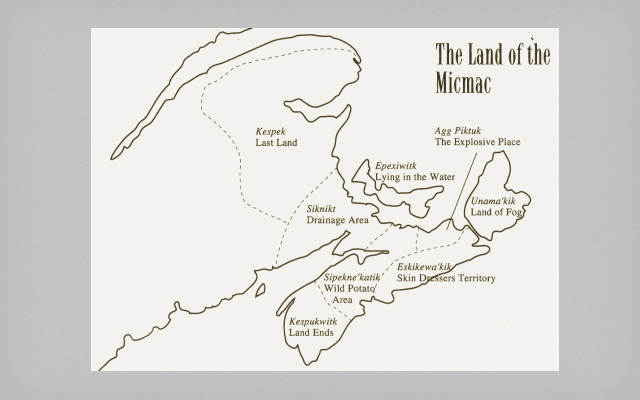
The Little People
Introduction
The Little People are human beings, but very small. They live in caves, or they burrow in the ground. You may sometimes hear their footsteps in the forest on a still day, though they themselves are rarely seen. They generally remain quiet during the day but come out at night to revel and dance, to do mischief and perform wonderful deeds.
Once in a while, in the forest, you will come upon stones piled together so as to make a little house. If you move them and go away, when you return you will find them placed just as they were before you touched them. You will also observe many tiny footprints; if you follow them, they will lead you to a hole in somerock. If you really see these little people and associate with them, they will make you small like themselves.
But you will not notice the change, and you will return to your normal size as soon as you leave them.

One day, long ago, when a girl was bathing in a river, she noticed a curious object floating down the current. As it came closer, she saw that it was a tiny canoe paddled by an equally tiny man. Cirious about him, she took the canoe in her hand and carried it home with her.
Her parents, when they saw the little man, were alarmed.
“Take him back at once!” they exclaimed. “Take him back where you found him, and let him go.”
Crying with disappointment, the girl left the wigwam, but she played with the little man for some time before she carried him back to the stream. She set the canoe adrift at the very spot where she had picked it up, and then stood watching it. Coming to a rapid, it seemed to be in great danger of being swamped. Very much alarmed, the girl ran toward the rapid, but the little man guided the canoe skillfully through the white water and into the smooth stream beyond.
Before passing out of sight, the dwarf promised her that he would come back again. So every day she went down to the river to look for him.
One day when picking berries with some other girls, she saw a dozen tiny canoes coming up the river. In the first one was the little man she had played with on his earlier visit. He proved to be the head chief of a band of Little People. The dwarfs landed on the bank of the stream, and cooked a meal there. When they had finished eating, they said to the Micmac girls, “We will take you across the river in our canoes if you wish to go.”
The girls laughed.
“How can we go in canoes so small that we can pick them up in our hands?”
The Little People coaxed, but the girls only laughed again. At last to humor him, she did so. To her astonishment, the moment she put her foot into it both the canoe and chief grew as large as any canoe and chief of the Micmacs. But to her companions on the shore, she appeared very small.

At last she persuaded the girls to step into the other canoes. The instant they did so, she saw them have the same experience she had had: the boat and the paddler seemed to grow large, each girl seemed to become small. The Little People took the whole group across the river. As soon as the girls stepped ashore, the canoes and the crew shrank to their former size and floated on downstream.
Such a short little allegory, I love how it ends without an apparent moral.
I can’t leave this book alone, it’s tiny and fits in the hand just like a miniature canoe. Long live story.
Tien-Min Liao
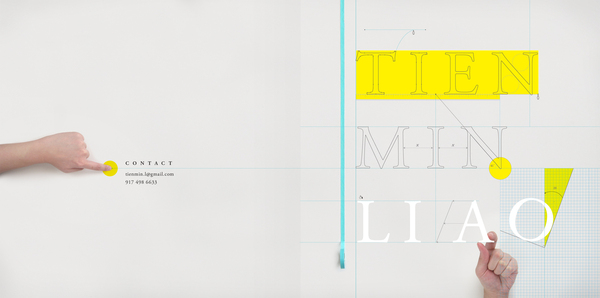
Somehow I stumbled across the lovely work of an ambitious young designer from Taiwan now living in New York. This lady can cut, grid, and layout like a champ. One of her pieces is a book about her homeland and it is comprised of paper craft and information graphics. Bed fellows I’ve not seen too much of before. Tien-Min makes them look like they were made for each other.
Tien-Min was born and raised in Taipei, Taiwan, and now is a graduate student at the Pratt Institute, New York. After graduating from National Chengchi University in Taiwan with a BA degree in Advertising, she received the Ministry of Education Scholarship to advance her education at Pratt. Her work has received a few awards, such as the iF Concept Award 2010, Red Dot Communication Design Award 2009 and How International Design Awards 2010.
Ilha Formosa book
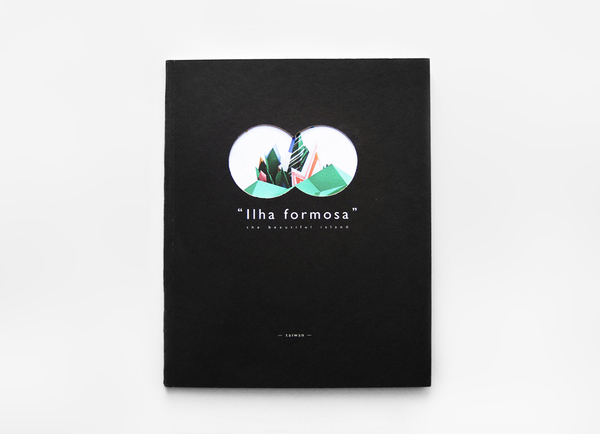
From Tien-Min:
“When I came to the United State, I noticed that many people don’t know my hometown Taiwan. Some people even cannot tell the difference between Taiwan and Thailand, just because they sound alike. As a designer, I think I should do something to promote this beautiful island.
The cover of the book is just like someone is watching Taiwan with telescope, and said “Ilha formosa”. It is inspired by the story of the first time European found Taiwan. They looked at this beautiful island and said “Ilha formosa” which means a beautiful island in Portuguese. After that, “Formosa” had been used as a name of this island (Taiwan) in the west for hundreds years.”
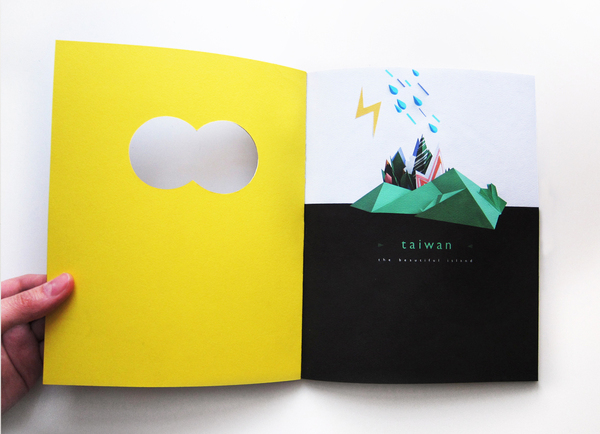

“The population of the mainland China is 59 times than Taiwan. If mainland China’s population is the whole dish, Taiwan is just one piece of chicken. (This dish is one of the famous Chinese dish – Kong Bao Chicken)”
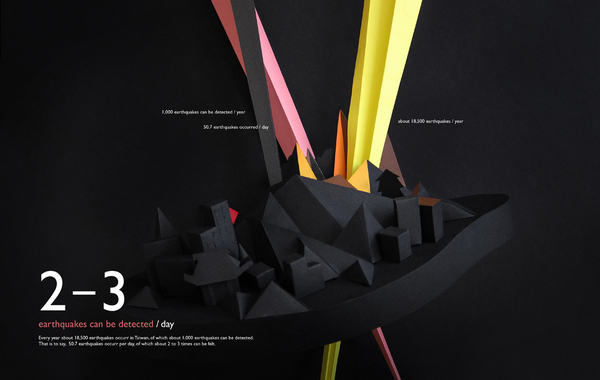
“Every year about 18,500 earthquakes occur in Taiwan, of which about 1,000 earthquakes can be detected. That is to say, 50.7 earthquakes occur per day, of which about 2 to 3 times can be felt.”
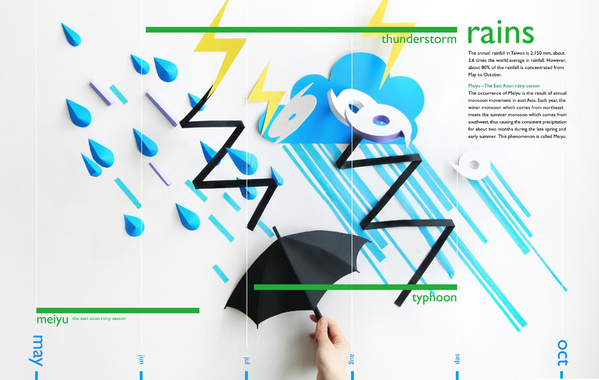
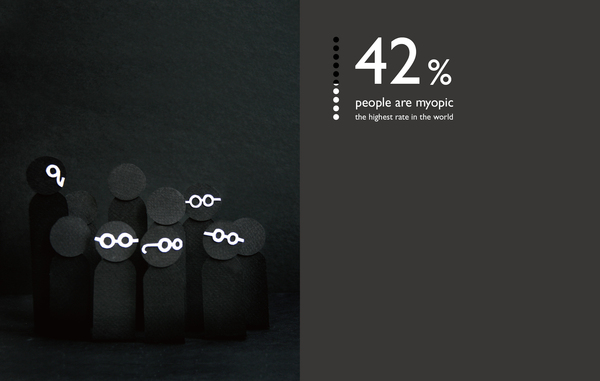
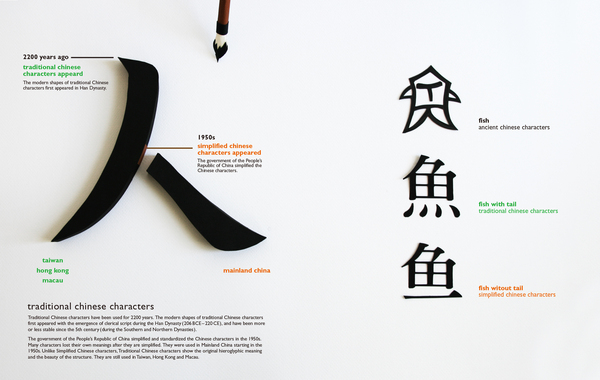
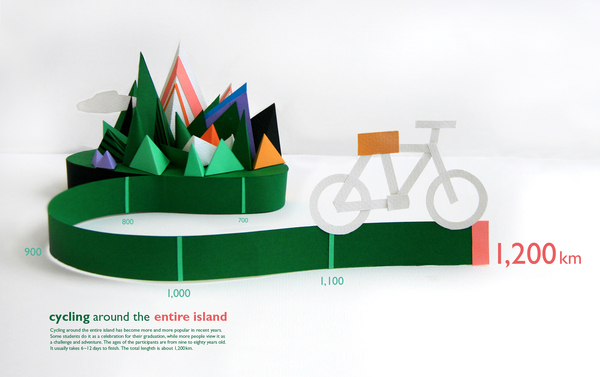
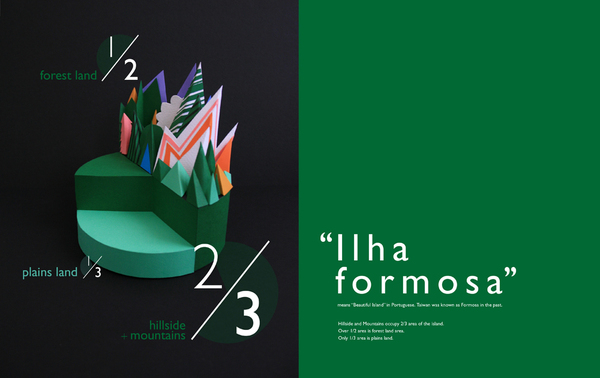
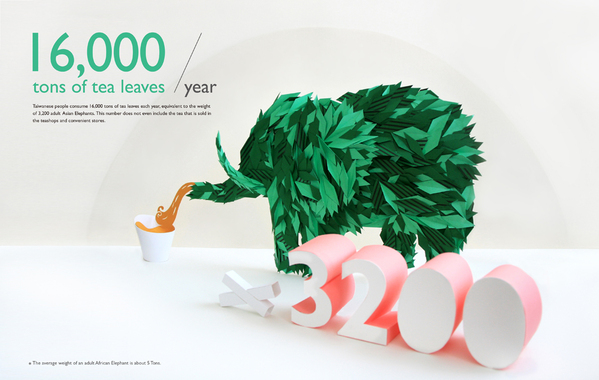
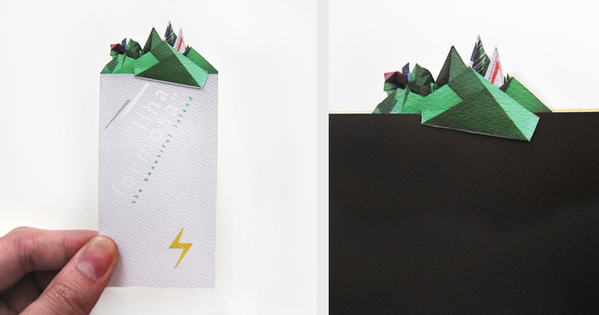
“When the reader is using the bookmark, it looks just like that there is an island floating on the edge of the page.”
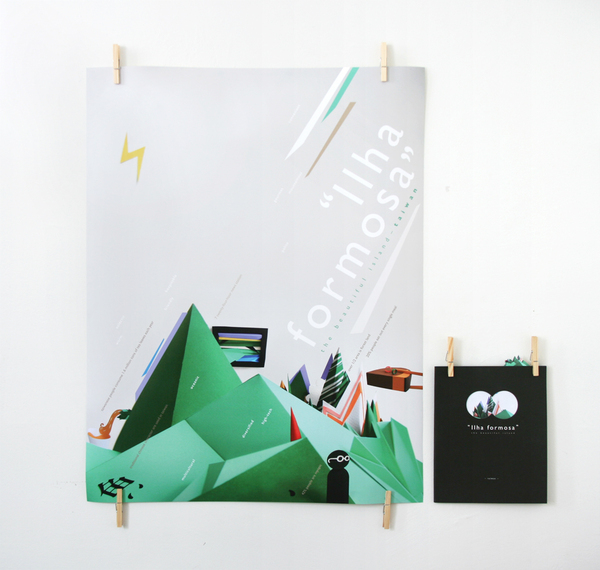
Self-promo folded poster 2011
“This is a self-promotion folded poster. I use my own objects to present my personality. I arranged them very carefully in a extremely neat way to present my personality. I think it shows not only about me, but also the personality that a designer should have, which is concerning every fine detail.”
Love her descriptions!
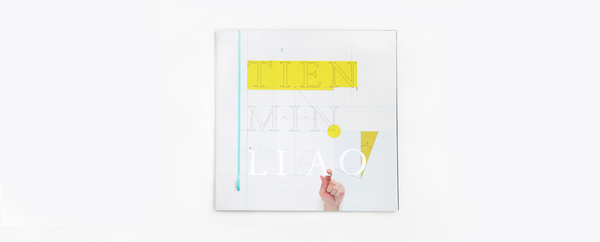
“When the poster is folded, you will see someone is carefully arranging and adjusting the characters (which is my name).”
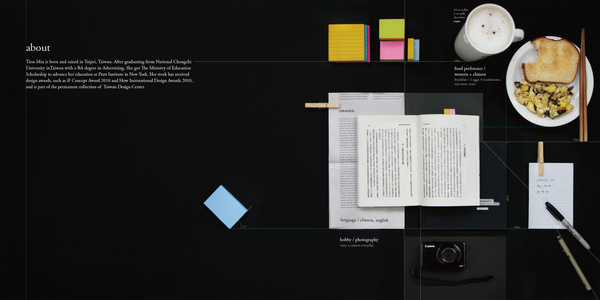
“Then you open the poster, the first page shows my life and the culture.”
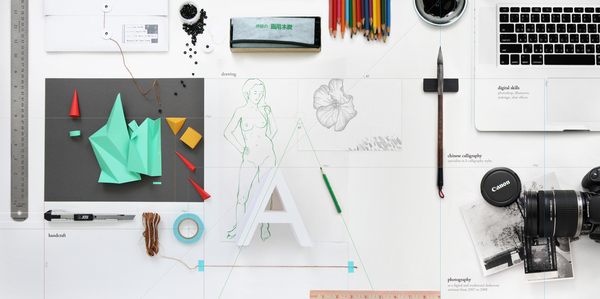
“Then open again, it shows my skills.”
Tien-Min Liao is on Behance, follow & appreciate her work there!
Where is Ai Wei Wei?

China’s most influential art figure is missing. Detained, likely, in a state facility, flipping off everyone who walks by him. His fame and accolades can now do little for him. Even a statement by Secretary Clinton is met with silence from the government that has detained Ai Wei Wei. His 100,000,000 porcelain seeds sit as silent as he does in Turbine hall at the Tate. As it stands, there are now 100,000,001 silent porcelain seeds waiting to be heard.
Ai Wei Wei is no stranger to draconian treatment. His father Ai Qing, arguably one of China’s finest modern poets, was sentenced to exile from 1958 to 1979 in the Gobi desert. This is where Wei Wei spent most of his childhood, an struggle he recounts as “experiencing humanity before I should.” This sort of early exposure to governmental punishment through censorship did not reduce Wei Wei’s ability to express his dissent in any manner of speaking. Aided by the internet, he has expressed his disgust and distaste for a variety of propaganda-laced initiatives that have influenced his work. Basically, he is an irritant to the government of China. His email has been hacked, his blog shut down, and yet again, Ai Wei Wei has been arrested. Sadly, no one knows where he is.
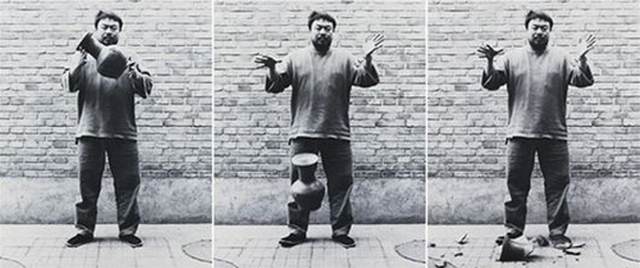
Dropping a Han Dynasty Urn (1995)
Ai Wei Wei is a figure whose definition expands the more you learn about him. Beyond fine art, he has merged the Vinn diagram that shows his life and work completely, so that there is simply a circle containing both with full overlap. His political statements are his art, and vice versa. And yet, he remains, resolutely culturally Chinese, a dissenter of his own homeland. Silenced by the government that placed the bitter taste in his mouth as a young boy. In fact, Ai Wei Wei is a product of Communist China, a product that refuses to be shaped by its maker.
As a figure, Wei Wei’s importance is likely not fully realized. One of his photographs, seen above, is a perfect example of the magnitude of his catalogue of work. Here, he drops an ancient Han dynasty vase and destroys it in a trio of images. An artist destroying priceless cultural treasures. Interesting point-of-view. But consider the cultural treasure is a measure of your nationhood, a symbol of why your country is special. During the Han dynasty and throughout history China called itself the “Middle Kingdom” – as it was regarded as the center of the universe. The mind set that China was the undisputed supreme Kingdom was overwhelming. Ai Wei Wei crushes that thought in a single moment, and holds his hands up carelessly as the history & supremacy of China lays at his feet.
It is difficult to assign equivalents in American culture because we don’t have a 5500-year history book to draw from. Let’s say it’s an amplified measure of dissent, in the highest.
Beyond his work, Wei Wei uses his words to express his sentiments, often with global implications. After working as the artistic consultant for the design of the Birds Nest Stadium for the 2008 Olympics, Wei Wei distanced himself from the project stating “I’ve already forgotten about it. I turn down all the demands to have photographs with it,” and later address statements to Steven Spielberg and the choreographers of the opening ceremony by saying “It’s disgusting. I don’t like anyone who shamelessly abuses their profession, who makes no moral judgment.” Spielberg later withdrew from the project as well.
Why would Ai Wei Wei then engage in these projects or even live in the country that he apparently despises so? Probably because he loves it. It seems clear to me that Wei Wei is interested in the prospect of a more reasonable and rational China, and is optimistic about its progress. In addition to loving the country that he is active against, he also cares deeply for setting a stage for dissent. He told the Guardian “And I also have to speak out for people around me who are afraid, who think it is not worth it or who have totally given up hope. So I want to set an example: you can do it and this is OK, to speak out.”
Given the current state of Chinese censorship on the internet and within its borders, it is not surprising to see why this man has been detained. The worrisome variant in this instance however is that his whereabouts are unknown. If he is released I hope he leaves the country and works abroad so that he can continue to create his dialogue of dissidence without fear of incapacitation and exile. China needs his voice, as we need all voices. In fact China is less defined without Ai Wei Wei, which is the case with any opposing forces. The black defines the white, the foreign defines the local, and the alternative thought defines the status quo.
Let us have Ai Wei Wei back. He has 50 more years of incredible left in his bones. If you (China) send him back to the Gobi where his father was exiled I swear to Han that I will come over there and bust him out with a team of angry artists, and you will never hear the end of it.
Ai Wei Wei’s last tweet:
一小时前来了一批警察出示搜查令,来到艾未未工作室草场地发棵258号,带走了8个工作人员至北京朝阳区南皋派出所问话:徐烨,钱飞飞,董姐,小伟,小谢,邢锐,蒋立,小胖侄子。路青一人与警方在家,现在工作室前后门均有警察,无法进出。艾未未在北京机场已被扣押3小时,无法联系。(未未助手)
An hour to go, a number of police present a search warrant, went to Ai Studio to send 258 trees, took eight staff to the Beijing Chaoyang District police station for questioning Nangao: Ye Xu, Qian Feifei, Sister Dong, Xiao Wei, a smallXie, Xing Rui, JIANG, chubby nephew.
Road Green at home with the police, the police now have the studio and back doors, can not access. Ai Weiwei has been detained at the Beijing Airport 3 hours, unable to contact.
Follow Ai Wei Wei on twitter – if you do not have Google Chrome translate the Mandarin, go to google.com/translate to copy, paste & read his tweets.
Spanish designer & artist Camilo Carmona

I first came to know the work of Camilo Carmona, known professionally as DOSCE, by her illustrated Tribes of Colombia. I’ve never really seen this sort of illustration style, they look like superheroes that went to Japan for a year and then came back via Illustrator CS5. The level of compassion and care is so apparent, it’s difficult to not fall in love with the idea of people that express their heritage and identity in dress and appearance. To me this says quite a bit. Depicting, documenting, and reveling in human diversity. High marks here. I also love the little environments they exist in. It’s just enough for me to complete their story in my own mind.
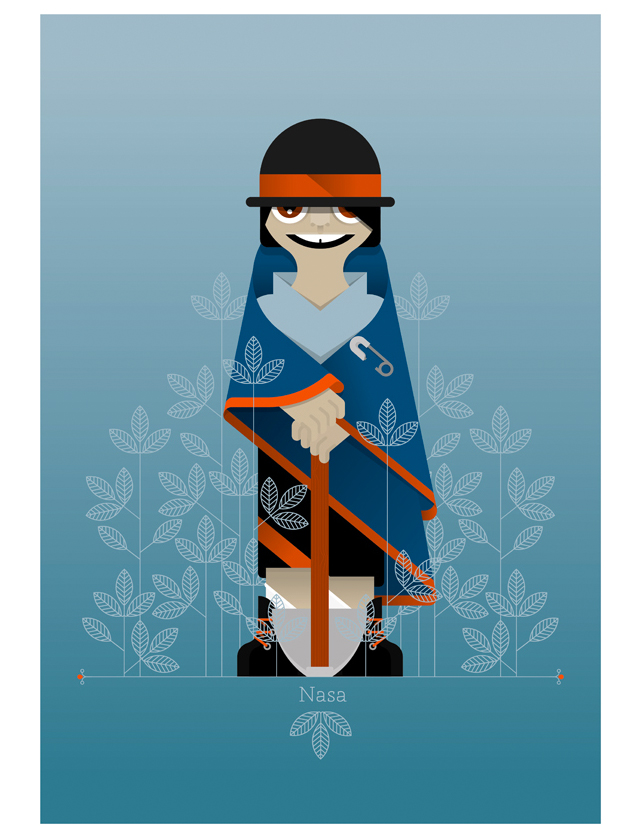
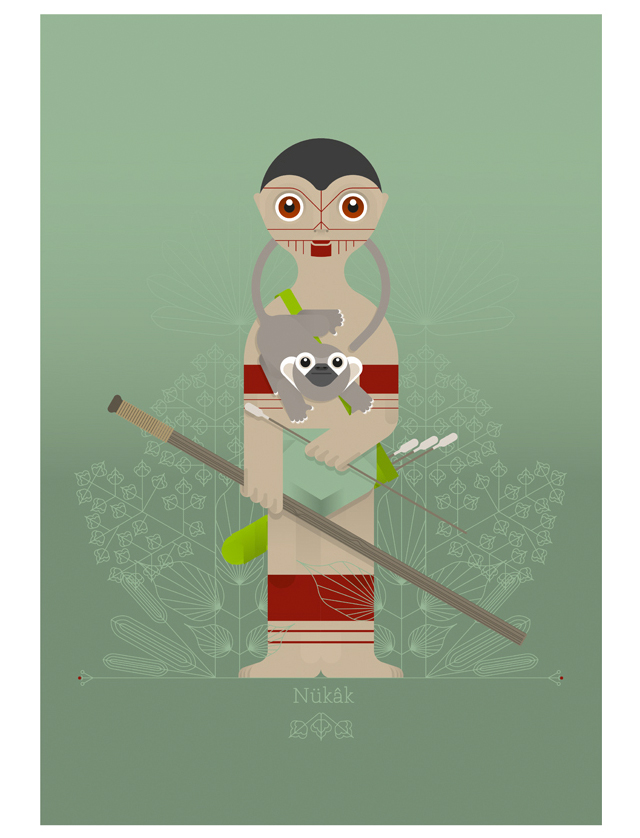
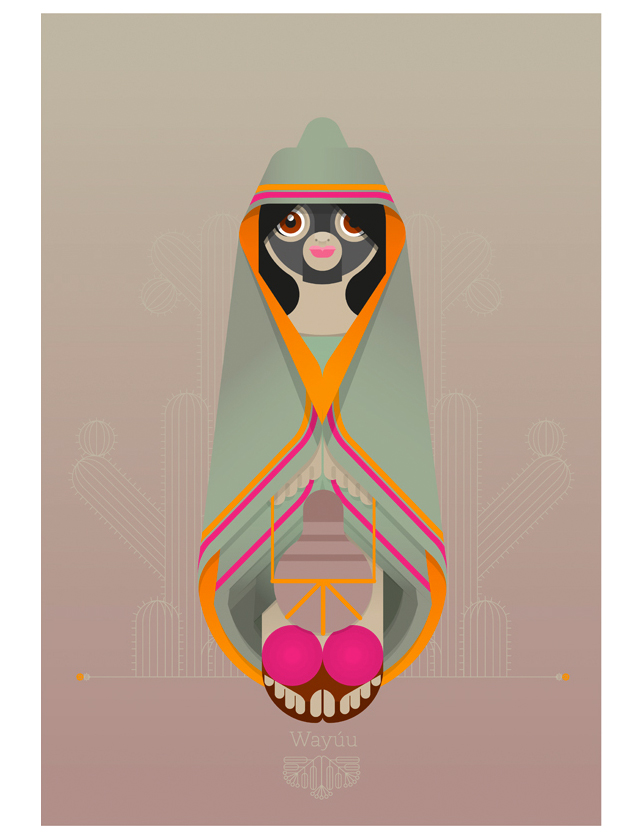
So lovely. However! DOSCE doesn’t just appreciate the tribes of Colombia. She also appreciates its fauna.
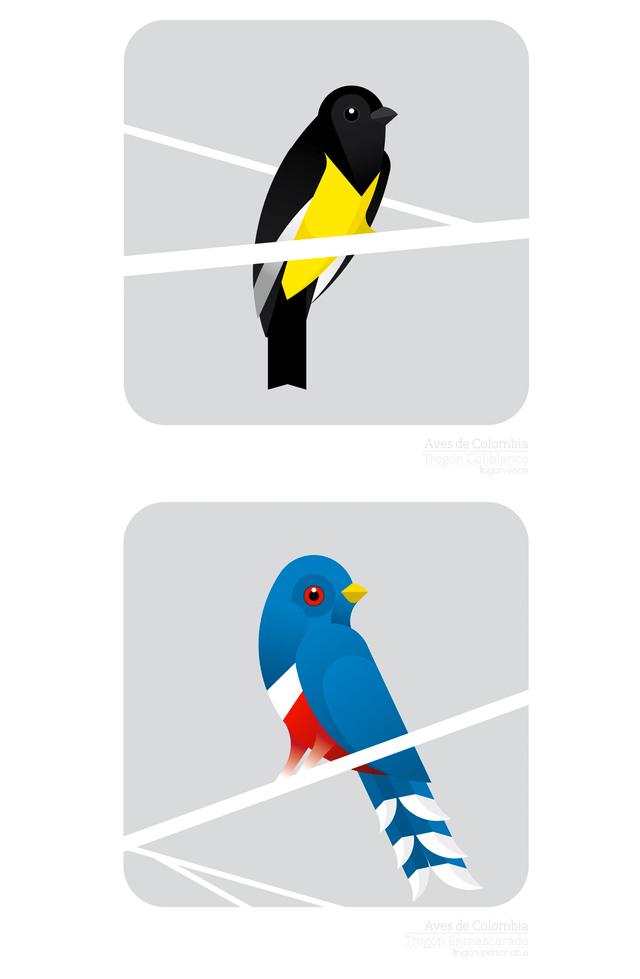
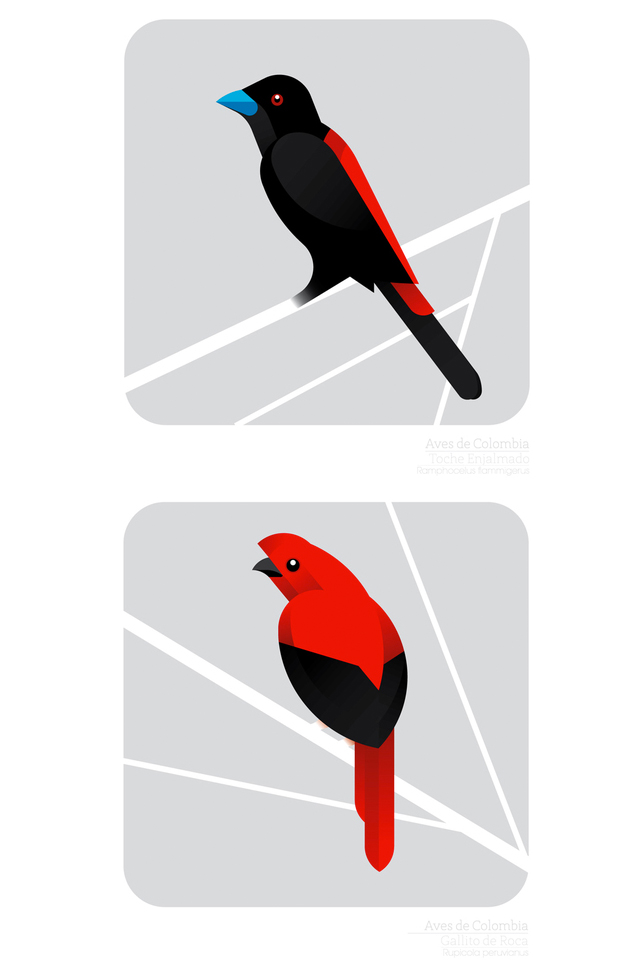
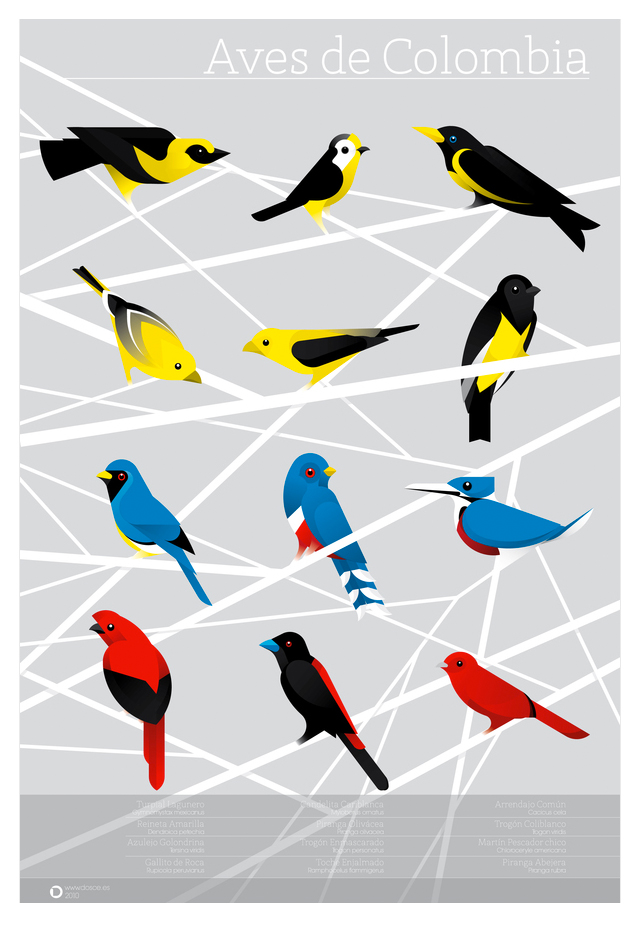
Once again, a unique illustration style that captures the essence of the subject and totally electrifies its gesture and presence. It’s great how the feet of these birds grow or melt into the branches. This would be such a lovely poster in my living room, or in a retail space. Completely charming & simultaneously modern.
Check out DOSCE on Behance with her pencil illustrations & other works. Or her Tumblr where she’s currently posting a drawing a day.